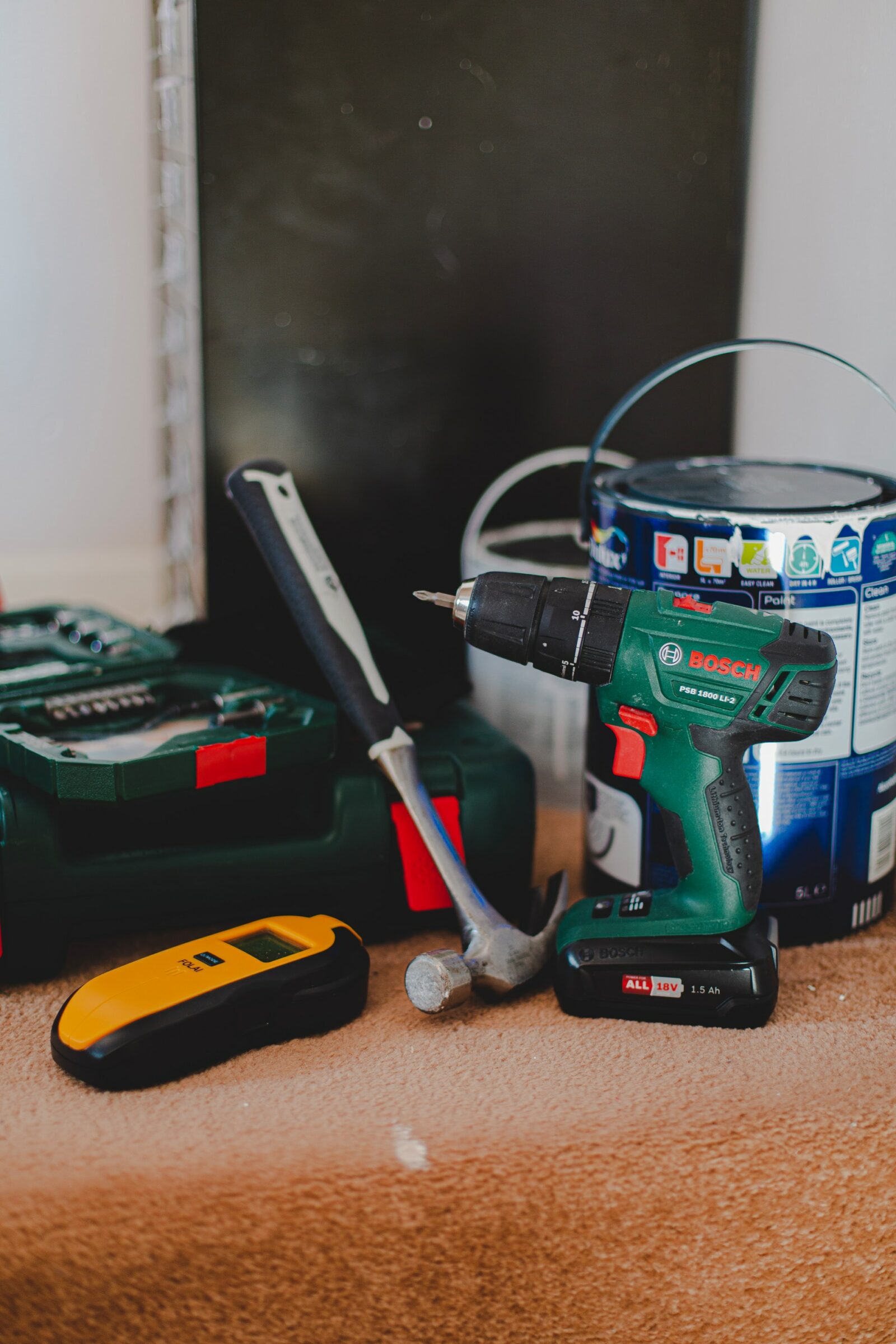If you are in a hurry, the “tap and guess” method could work just fine when you’re trying to find the studs in your wall. However, since it’s not such a precise way to do it, you could also end up with random holes that you then have to cover up and paint over!
An easier and more reliable method is grabbing a stud finder! You might not feel like it’s necessary but it’s going to eliminate a lot of the guesswork and frustration!
Of course, stud finders are often used by professionals but nowadays, even the average person can get quite a lot of use out of one, especially if you are currently working on a renovation project or trying to redecorate your home.
Unfortunately, while there are many models out there, is no single one that works perfectly for everyone which is why you may need a guide to help you decide which suits your particular situation the best so you can know you’ve made the best possible choice!
But first of all, here are some of the basics you may want to know if you are looking to purchase a stud finder for the first time!
So what is a stud finder?
Well, as the name also suggests, a stud finder is a pretty simple but efficient device that will detect exactly where the studs in your wall are situated.
Most often than not, people use them to determine the right placement for a nail or screw in order to hang something like a painting.
Stud finders help you detect where studs are in your wall. Most people using one are seeking a nail or screw, usually to hang something that might pull through the drywall.
There are 2 types of stud finders – magnetic and electronic.
Of course, the magnetic ones use magnets to locate the screws and nails that keep your drywall in place while the second category uses active sensors, which make the process really precise, as opposed to magnetic ones that usually find the general area rather than the screw’s exact center.
This is because electronic stud finders are able to detect differences in wall density in order to find the studs.
Generally, they are powered by batteries and some of them detect not just metal studs, but also wood ones. Some even have AC power detection!
The simpler models will show the edges of studs but those that are more advanced can even show you the stud’s width within the wall!
There are even apps for your phone that can help you locate the studs by using the phone’s magnetometer (the sensor that controls the compass).
However, as evolved as technology is today, these apps can only do so much! More precisely, they will only be able to detect metal screws or nails but not wooden ones and they won’t be able to also measure your wall’s density.
Now that you’re a bit more familiar with stud finders and what they can do in general, here are some of the best stud finders on the market and what they can do individually, in no particular order!
Franklin ProSensor 710
The first product on our list can detect up to 1.6 inches deep and allows you to see the full width of the stud.
The picture of the stud is clear and it can make the center accurately.
It is easy to operate with just one hand and there is no calibration needed.
Zircon MetalliScanner m40
The Zircon MetalliScanner m40 is more of a metal detector than a stud finder but it definitely does the job just as well if not better when it comes to metal studs, working pretty similarly to a magnetic stud finder.
However, this one can detect metal in a number of different materials including plaster and is able to sense them deeper than most magnetic models can.
In plaster, it is more accurate than standard stud finders as well.
If you turn the scanner sideways, you can also identify nails and screw easier.
Just keep in mind that, if you have wire mesh in your walls, this is not the best option out there.
Other metal objects such as pipes can also throw off the search.
To ensure the best results, run it horizontally as well as vertically multiple times.
Franklin ProSensor T6
The Franklin ProSensor T6 is one of the best stud finders for casual users that need one in their own home.
It is small and easy to store whenever it’s not in use but despite this, its detection capabilities meet all expectations.
It’s also easy to maneuver with just one hand and has whole stud detection.
Calibration is not needed.
BLACK+DECKER BullsEye Line Laser with Stud Sensor BDL190S
Another easy to use model, the BLACK+DECKER BullsEye Line Laser with Stud Sensor BDL190S has a built in laser level but no deep scan.
However, what makes this product so special is the fact that it’s like getting two tools in one!
Whenever you need mounting or hanging heavy items that need to be perfectly level and straight as well as secured to a stud (mirrors, cabinets, heavy art, TVs and shelves, to just name a few examples,) this is the ideal assistant for all that difficult and precise work.
First, use the device to find all the hidden objects from inside your wall such as metal pipes, studs, wooden support beams and even live AC wires.
You will be pleased to know that it works on most materials including plaster, lathe, concrete and drywall.
Then depress the power button – and keep it so with your thumb while you work – and slide the stud finder across your wall.
When it finds the stud or any other object hiding inside your wall, you’ll hear a beeping sound.
At that point, you can switch the BullsEye to its level function that then beams a red laser line up to twenty feet horizontally in both directions, letting you know exactly how to perfectly align your heavy object on the wall.
The BullsEye includes 2 AA batteries and also comes with a 2-year warranty.
CH Hanson 03040 Magnetic Stud Finder
The CH Hanson 03040 Magnetic Stud Finder is small, portable, and does not need any batteries.
It includes a bubble level and is not only easy to use but also really accurate!
This is a magnetic stud finder so it’s rather rudimentary when compared to its electronic counterparts.
However, in spite of its simplicity, this device is a huge advantage when you don’t have any batteries around.
This is because it features a built-in magnet that is attracted to the screws and nails in your walls, letting you know where they are.
It uses rare earth magnets and also includes a two-way level, allowing you to hang the finder from a metal stud for more accurately leveling walls.
Conveniently enough, there is an arrow on the button that will let you know where the safe spot for screws and nails is, getting rid of all the guesswork when hanging up frames, pictures and other such objects.
Bosch Digital Multi-Scanner GMS120
The Bosch Digital Multi-Scanner GMS120 scans up to 4.75 inches deep and is able to penetrate many different materials, even concrete!
It can also detect live wires!
If you have a project that requires you to hammer or drill into your ceilings or floors, it’s imperative that you first get a good idea of the support behind them just to make sure no injuries happen or that you don’t completely destroy these surfaces.
This device is a multi-scanning option and you can hold it comfortably even in the most awkward positions so it’s easier and safer to work on ceilings.
The design is ergonomic and can house a multi-mode sensor that can detect not only metal support but also wood studs and live AC wiring, all at the same time.
It is also one of the best choices out there for floors since it provides a deep 4.75-inch scan and can handle concrete and other such dense materials!
Finally, this model features audible detection signals but also an LCD display to let you know when it detects something.
Folai Wall Scanner
The Folai Wall Scanner can scan up to 2 inches deep and detect live wires but cannot do the same with PVC pipes.
On the other hand, it’s worth the investment since it’s so easy to use and can protect you from accidentally drilling into electrical wiring and seriously injuring yourself or even losing your life as a result.
Keep in mind that, while you can always turn the power off beforehand, it’s still such a huge inconvenience to try and repair a severed wire within your wall once you drill through it.
This device is able to detect even smaller profile AC wires so you can have peace of mind that you’re safe while using this product.
Of course, discovering AC wires is not all this wall scanner can do.
After all, it actually features 5 scanning modes for wood, metal, and AC wires hidden up to two inches inside walls.
It’s also super easy to use since there is a pretty large LCD display that will show you the direction and depth of studs and other objects hidden inside your wall.
And to let you know whether you are moving closer or further from an object, the device will also use a beeping sound.
Franklin Sensors ProSensor T13
The Franklin Sensors ProSensor T13 is a super accurate choice that features 13 sensors spread out over its 7-inch surface.
When a stud is discovered, the LEDs light up over it, showing you its full size.
This device is so wide that it is even able to show you the doubled up studs usually placed around windows and door frames.
It can detect wood and metal studs under 3 to 4-inch-thick drywall really accurately as well.
And even though it is not designed to locate wiring or pipes, you might still get an LED or two blinking when running it over things like copper pipes.
The StudBuddy Magnetic Stud Finder
Another magnetic option, The StudBuddy Magnetic Stud Finder is simple, easy to use and effective. And, of course, it doesn’t require any batteries to work!
It is only able to detect crews, nails and metal studs in drywall.
All you need to do is slide it in an “S” pattern all over a wall.
When you get within a couple of inches of a stud, the strong neodymium magnets cause the device to snap immediately.
Then, slide it up and down a few times for a more accurate location of the studs.
It tends to work better on metal studs, needing less confirmation back and forths to find their location.
However, that’s not to say that it will also not find other metals in your wall such as hidden electrical boxes and ductwork.
Craftsman Hi-Vis Stud Sensor
This is the ideal product if you only need something to do this one, simple thing – locate studs – and do it well!
The Craftsman’s Hi-Vis Stud Sensor is simple and effective and is able to detect the edges of both metal and wood studs.
Keep an eye on the indicator while sliding it along the wall after pressing the button on the side.
If the indicator lifts up, it means you are at the edge of a stud and will remain so until you pass the other edge.
Slide back to confirm the location and mark to determine the center – easy!
It is able to find studs inside 3 to 4 inches-thick drywall.
Tavool 4-in-1 Stud Sensor
This stud finder from Tavool has four scan modes, as the name also suggests, and can detect AC wire perfectly when it’s less than 2 inches deep but is a bit more limited beyond that.
Three of the scan modes are for wood, AC wiring and metal respectively, while the fourth is meant for deep scanning.
It also features a center indicator which will save on time compared to when making edges to locate the center yourself.















Leave a Reply